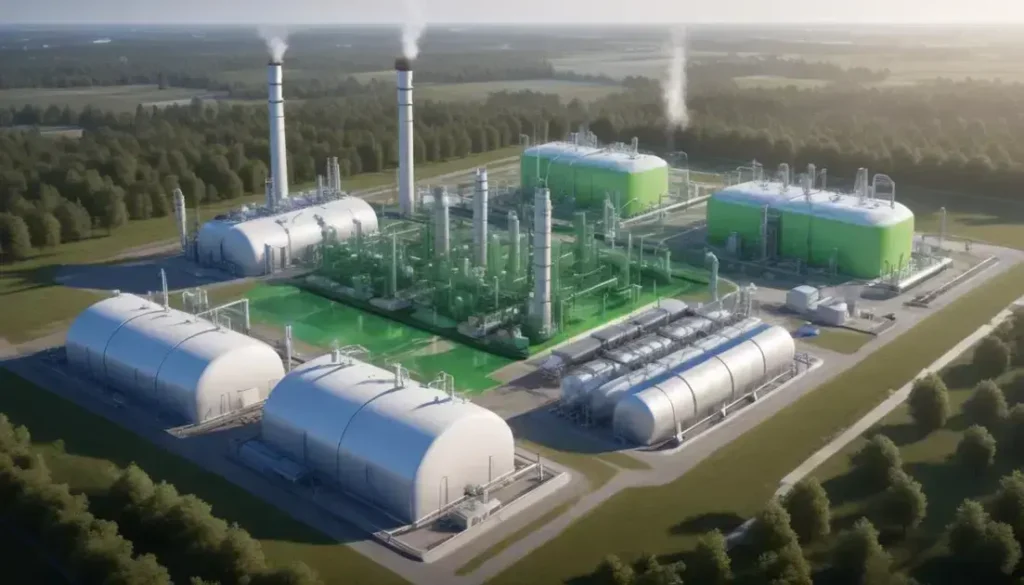Honda’s commitment to achieving carbon neutrality by 2050 focuses on developing zero-emission vehicles, enhancing energy-efficient manufacturing, and engaging suppliers in sustainable practices.
Honda’s commitment to achieving zero impact through sustainability initiatives is reshaping the automotive landscape. Are UK businesses ready to adapt?
Honda’s commitment to carbon neutrality by 2050
Honda is taking a bold step towards achieving carbon neutrality by 2050, reflecting their commitment to sustainability and environmental stewardship. This ambitious goal is part of Honda’s larger strategy to reduce greenhouse gas emissions across their operations and product lifecycle.
The company’s approach emphasizes the transition to battery electric vehicles (BEVs) and hydrogen fuel cell technology. By investing heavily in these technologies, Honda aims to provide environmentally friendly alternatives to traditional combustion engines. This shift not only meets customer demand but also aligns with global standards and regulations aimed at mitigating climate change.
Furthermore, Honda plans to enhance its production processes by making factories more energy efficient and incorporating renewable energy sources. This holistic approach ensures that their entire supply chain adheres to stringent sustainability targets, contributing to a greener future.
In addition to product innovation, Honda is working collaboratively with suppliers to improve sustainability practices throughout its network. This initiative fosters a culture of environmental responsibility, ensuring that efforts towards carbon neutrality are adopted universally.
The Triple Action to ZERO concept explained
The Triple Action to ZERO concept represents Honda’s innovative approach towards achieving their carbon neutrality goal. This framework involves three critical strategies that work in synergy to minimise environmental impact.
Firstly, Honda focuses on reducing emissions during the manufacturing phase. By implementing energy-efficient processes and utilising renewable energy sources, they aim to lower the carbon footprint associated with production.
Secondly, the company is committed to enhancing the lifecycle management of their vehicles. This includes initiatives that improve fuel efficiency, promote recycling, and extend the longevity of vehicle components. Such measures ensure that each stage of a vehicle’s life contributes to lower emissions.
Lastly, Honda prioritises the development of zero-emission vehicles like electric and hydrogen-powered cars. These vehicles are designed to operate without emitting harmful pollutants, supporting the transition to a more sustainable automotive industry.
The coherent integration of these three actions forms the backbone of Honda’s environmental strategy, demonstrating their commitment to a sustainable future for both the company and its customers.
Carbon-neutral factories: a step towards sustainability
Honda’s commitment to building carbon-neutral factories plays a vital role in their overall sustainability efforts. These facilities are designed to operate with minimal environmental impact, focusing on energy efficiency and renewable energy sources.
To achieve this objective, Honda employs advanced technologies and innovative processes that significantly reduce energy consumption during manufacturing. By integrating systems that utilise solar power and wind energy, the factories can operate sustainably, decreasing reliance on fossil fuels.
Additionally, Honda adopts strict waste management practices aimed at minimising waste generation and promoting recycling. By creating closed-loop systems, the company can repurpose materials and reduce landfill contributions, ensuring a more sustainable production cycle.
The transition to carbon-neutral facilities not only supports Honda’s environmental goals but also enhances operational efficiency. This shift demonstrates the company’s leadership in the automotive industry, setting an example for others to follow in the pursuit of sustainability.
As Honda moves towards these eco-friendly factories, they are also committed to transparency, regularly sharing sustainability metrics with stakeholders. This openness helps build trust and showcases their progress in reducing their carbon footprint while contributing to a greener future.
Engaging suppliers in the sustainability journey
Engaging suppliers in the sustainability journey is crucial for Honda’s commitment to carbon neutrality. Suppliers play a vital role in the production process, and their participation in sustainable practices significantly impacts the overall environmental footprint.
Honda actively collaborates with its suppliers to implement green practices that align with their sustainability goals. This collaboration involves sharing best practices, providing training, and encouraging suppliers to adopt renewable energy sources and resource-efficient methods.
Moreover, the integration of sustainability into the supply chain improves transparency and accountability. Honda assesses supplier performance on environmental criteria, ensuring that they meet stringent sustainability standards. This assessment not only promotes responsible sourcing but also drives innovation in sustainable materials and processes.
By fostering an ecosystem where sustainability is a shared value, Honda enhances its competitive advantage, demonstrating to consumers that it prioritises environmental responsibility. This alignment also encourages suppliers to invest in their own sustainability initiatives, creating a ripple effect across the industry.
The collaboration between Honda and its suppliers exemplifies the importance of teamwork in addressing global sustainability challenges. As they navigate this journey together, both parties can contribute to a greener future, ensuring that sustainable practices become the norm in the automotive industry.
Lifecycle emissions reductions through innovative strategies
Reducing lifecycle emissions is crucial for achieving sustainability goals, and Honda is at the forefront of this initiative with innovative strategies. The company recognises that emissions occur at every stage of a vehicle’s life, from production to disposal, and is committed to minimising impact through effective measures.
Honda’s approach begins with sustainable manufacturing practices that focus on energy efficiency. By streamlining production processes and incorporating renewable energy sources, the company significantly lowers emissions generated during vehicle assembly. This commitment extends to utilising recycled materials in production, which helps reduce the need for virgin resources.
Furthermore, Honda emphasises the importance of fuel efficiency in its vehicles. Through advancements in technology, they enhance the performance of internal combustion engines and electric vehicles, ensuring that consumers benefit from lower emissions during vehicle use. This improvement plays a key role in delivering cleaner alternatives to traditional fuel options.
The end-of-life strategy is another area of focus, with Honda implementing recycling programs to recover valuable materials. This initiative ensures that vehicles are disposed of responsibly, consequently reducing emissions associated with landfill contributions.
By adopting these innovative strategies, Honda not only demonstrates its leadership in the automotive industry but also sets a benchmark for others to follow in pursuit of reducing lifecycle emissions.
Climate governance and alignment with international standards
Climate governance is a critical aspect of Honda’s strategy as it aligns with international standards aimed at mitigating climate change. By actively participating in global initiatives and frameworks, Honda seeks to enhance its environmental performance and address pressing climate challenges.
The company prioritises adherence to regulations such as the Paris Agreement, committing to reduce greenhouse gas emissions and limit global warming. This alignment not only demonstrates Honda’s accountability but also reinforces its commitment to transparency in reporting sustainability efforts.
In addition to following international guidelines, Honda engages with various stakeholders, including governments, non-governmental organisations, and industry groups. This collaborative approach ensures that they stay informed about evolving climate policies and contribute to shaping future regulations.
Moreover, Honda has established internal policies that promote sustainability across all operations. These policies outline measurable targets for emissions reduction and sustainability initiatives, ensuring that Honda’s goals are not only ambitious but also achievable.
By integrating climate governance into its core business strategy, Honda demonstrates leadership in environmental responsibility. This proactive stance positions the company not only as a market leader but also as a role model in the automotive industry, guiding others towards a sustainable future.
Future outlook: Honda’s roadmap to sustainability
Honda’s roadmap to sustainability outlines a comprehensive strategy aimed at achieving significant environmental goals by 2050. This plan focuses on integrating sustainable practices throughout the company’s operations and product lifecycle.
One of the key initiatives includes the development of zero-emission vehicles. Honda aims to expand its electric and hydrogen fuel cell vehicle offerings, promoting cleaner alternatives to traditional combustion engines. This effort is essential in reducing the carbon footprint of the transportation sector.
Additionally, Honda is committed to enhancing its manufacturing processes to make them more energy-efficient. By incorporating advanced technologies and renewable energy sources, the goal is to minimise emissions during production while maximising resource efficiency.
The company’s sustainability roadmap also emphasises the importance of supply chain engagement. Honda plans to work closely with suppliers, ensuring that they adopt environmentally friendly practices. This collaborative approach further strengthens the commitment to sustainability and accountability across all levels of production.
Lastly, Honda’s roadmap prioritises community engagement by investing in local projects that support environmental initiatives. By fostering partnerships and encouraging public awareness, Honda seeks to inspire collective action towards a more sustainable future.
In Conclusion: Honda’s Commitment to a Sustainable Future
Honda’s dedication to sustainability is clear through its innovative strategies and comprehensive roadmap. By focusing on zero-emission vehicles, improving manufacturing processes, and engaging with suppliers, Honda sets a strong example in the automotive industry.
The company’s initiatives not only aim to reduce carbon emissions but also seek to inspire communities and foster a collective responsibility towards the environment. This commitment to sustainability is not just about compliance; it is about paving the way for a greener, more sustainable future for everyone.
As Honda continues its journey, it reflects the growing importance of sustainable practices in business. By prioritising environmental responsibility, Honda not only enhances its brand reputation but also contributes positively to global efforts against climate change.
Ultimately, Honda’s actions encourage others in the industry to follow suit, demonstrating that a sustainable approach can lead to innovation, growth, and lasting change.
Frequently Asked Questions
What is Honda’s roadmap to sustainability?
Honda’s roadmap to sustainability outlines their strategies to achieve carbon neutrality by 2050, focusing on zero-emission vehicles, energy-efficient manufacturing, and engaging suppliers.
How does Honda plan to achieve zero-emission vehicles?
Honda plans to expand its electric and hydrogen fuel cell vehicle offerings while improving fuel efficiency in their existing models.
What are the benefits of Honda’s carbon-neutral factories?
Honda’s carbon-neutral factories aim to reduce emissions during production, enhance energy efficiency, and incorporate renewable energy sources, contributing to overall sustainability.
How does Honda engage its suppliers in sustainability efforts?
Honda collaborates with its suppliers to adopt green practices, ensuring that sustainability is prioritized throughout the entire supply chain.
What role does climate governance play in Honda’s strategy?
Climate governance is essential for Honda as it aligns with international standards, ensuring transparency and accountability in their sustainability efforts.
How does Honda support community engagement in sustainability?
Honda invests in local projects that support environmental initiatives, promoting public awareness and encouraging collective action towards sustainability.


